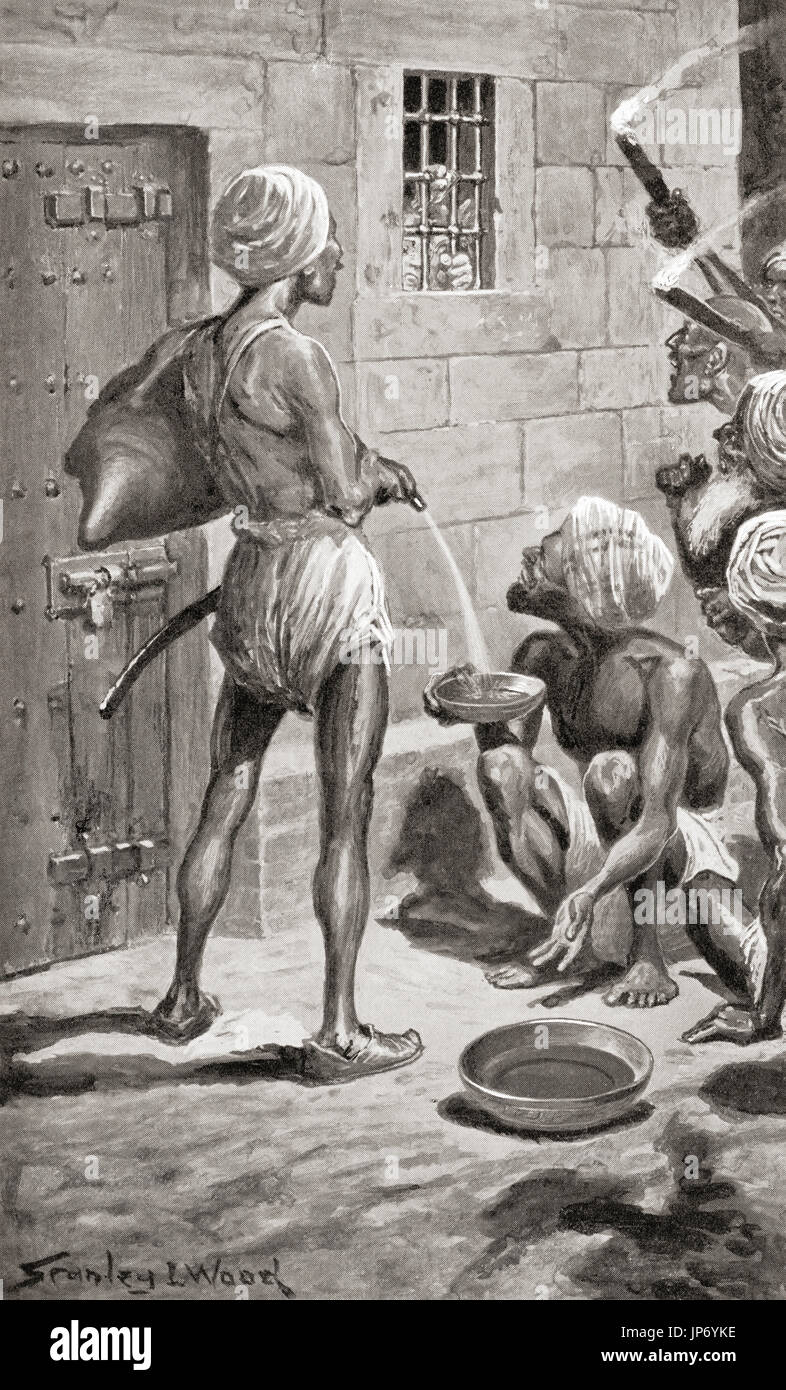

At the end of the incident, modern historians believe some 43 men were dead or missing for other reasons. As time passed, men collapsed from heat stroke, suffocation, or trampling. Prisoners begged for water or escape, growing delirious from heat exhaustion. The Bengali troops, apparently acting on their own, then packed the prisoners in a guard room measuring 14 by 18 ft (4.3 by 5.5 m) and locked them in overnight. During this period some prisoners were able to escape, and others attacked their guards. Indian soldiers took the surviving 64 to 69 men of the British contingent prisoner, binding them for security. Desertions by allied troops, mainly Dutch, made even this temporary defense untenable, and the fort was taken.

The garrison's commander organized an escape, and left a token force in the military fort under the command of John Zephaniah Holwell, a onetime military surgeon who was a top East India Company civil servant. Siraj organized an army and laid siege to the fort, whose defenders took many casualties.

The Nawab of Bengal, Siraj Ud Daulah, was unhappy with British interference, having achieved his station despite opposition by the East India Company, and perceived a direct threat to his own rule. In 1756, in preparation for expected skirmishes with French forces, the British began building up Fort William's military strength and defenses. In fact, the total number captured by the Indian attackers numbered less than 70, or about half the number Holwell claimed had been in the cell with him.Fort William had been established to protect British East India Company trade in the city of Calcutta, in the region of Bengal. For example, the records of the Fort William garrison indicate that even after the alleged atrocity, only 43 soldiers were unaccounted for-the maximum that could have been killed in the Black Hole.
#Black hole of calcutta license
While that judgment probably swings too far to the opposite extreme, it now seems pretty clear that Holwell took considerable license with the facts. In fact, Little seems to have suspected that the incident might never have happened at all. Little published an article that began to throw great doubt on the details of Halwell’s version. Fair enough reason, it might be argued, for embellishing his tale in an effort to “make a good story better.”įor more than 150 years, the story of the Black Hole enjoyed widespread acceptance. In the wake of his published account, he rose to become the British Governor of Bengal. Skeptics, however, note that Holwell’s version of events served him well, making him into something of a celebrity, if not a hero. Of the 22 other survivors of the ordeal, none openly contradicted his version of the events, and a number vouched for it. Sign up to British Heritage Travel's daily newsletter here!Īt first, there seemed no reason to doubt Holwell’s story. According to Holwell the Nawab’s troops rounded up 146 British soldiers and herded them at the point of bayonets into the fort’s prison, a single cell designed to hold six people. In the long run, of course, the Nawab’s army was no match for the might of Britain, but the small garrison at Fort William was overwhelmed like a pebble in a flood. In 1756 the new Mogul Nawab of Bengal, Siraj-ud-daulah, decided that the East India Company was a threat to his power and demanded that the British dismantle the fortifications at Fort William. The East India Company, ostensibly a trade conglomerate, operated largely in proxy for the British Government, overseeing Britain’s investment in India even to the extent of maintaining its own army. The first-hand account belongs to John Zephaniah Holwell, an Irish doctor who went to India in the service of the East India Company and subsequently survived a night in the prison known as the Black Hole of Calcutta.


 0 kommentar(er)
0 kommentar(er)
